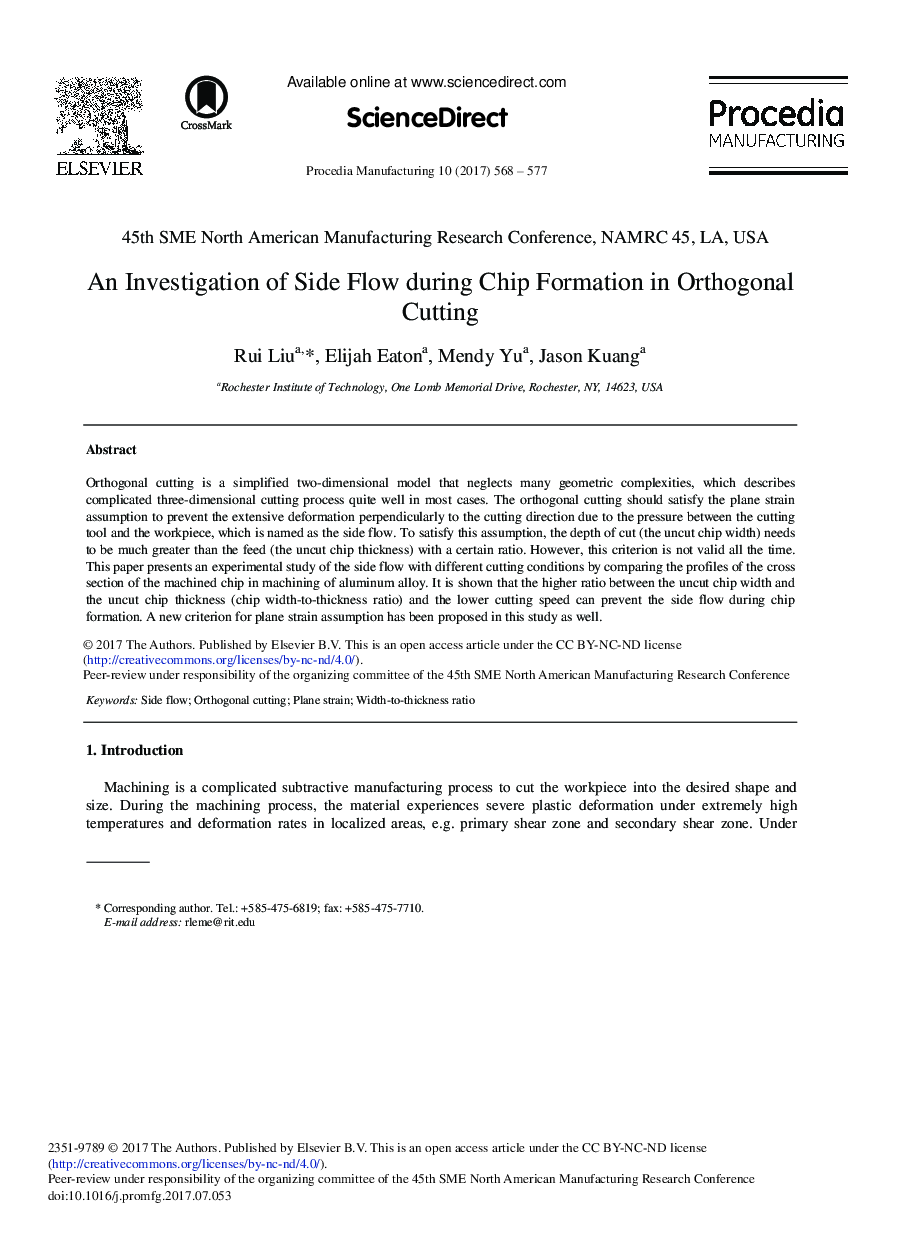| کد مقاله | کد نشریه | سال انتشار | مقاله انگلیسی | نسخه تمام متن |
|---|---|---|---|---|
| 5128803 | 1489602 | 2017 | 10 صفحه PDF | دانلود رایگان |

Orthogonal cutting is a simplified two-dimensional model that neglects many geometric complexities, which describes complicated three-dimensional cutting process quite well in most cases. The orthogonal cutting should satisfy the plane strain assumption to prevent the extensive deformation perpendicularly to the cutting direction due to the pressure between the cutting tool and the workpiece, which is named as the side flow. To satisfy this assumption, the depth of cut (the uncut chip width) needs to be much greater than the feed (the uncut chip thickness) with a certain ratio. However, this criterion is not valid all the time. This paper presents an experimental study of the side flow with different cutting conditions by comparing the profiles of the cross section of the machined chip in machining of aluminum alloy. It is shown that the higher ratio between the uncut chip width and the uncut chip thickness (chip width-to-thickness ratio) and the lower cutting speed can prevent the side flow during chip formation. A new criterion for plane strain assumption has been proposed in this study as well.
Journal: Procedia Manufacturing - Volume 10, 2017, Pages 568-577